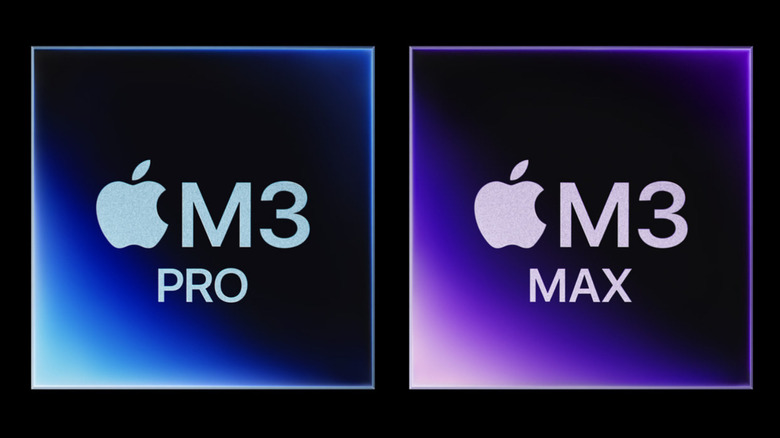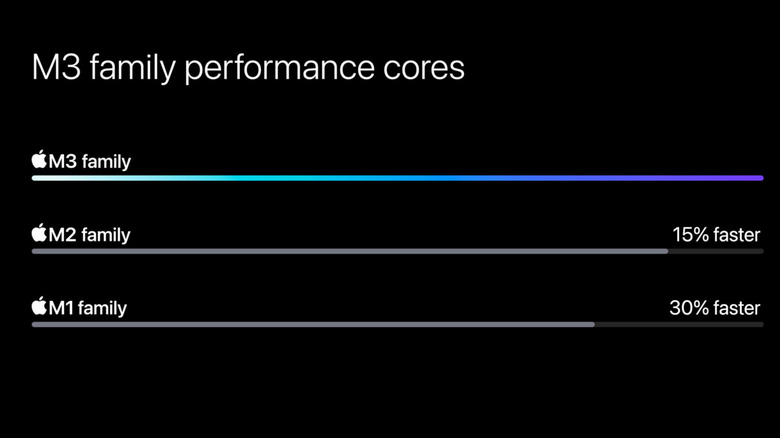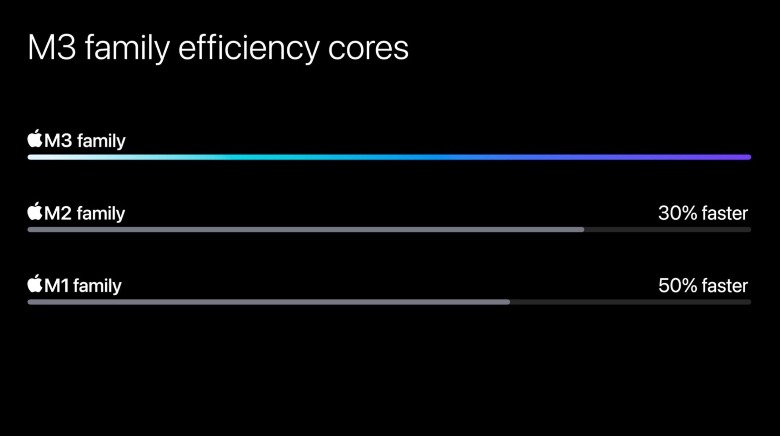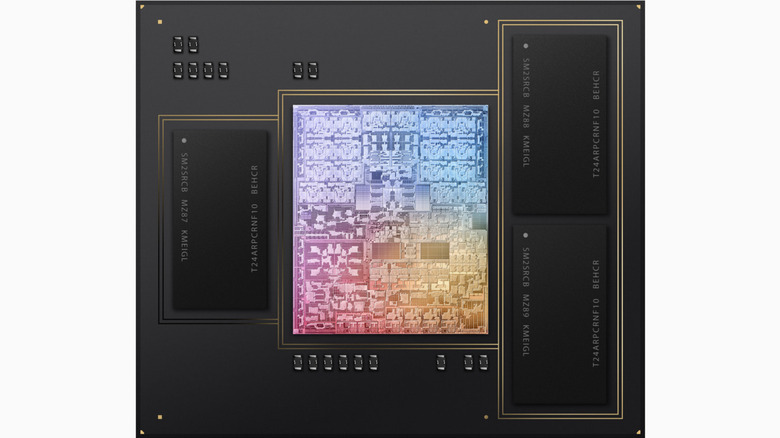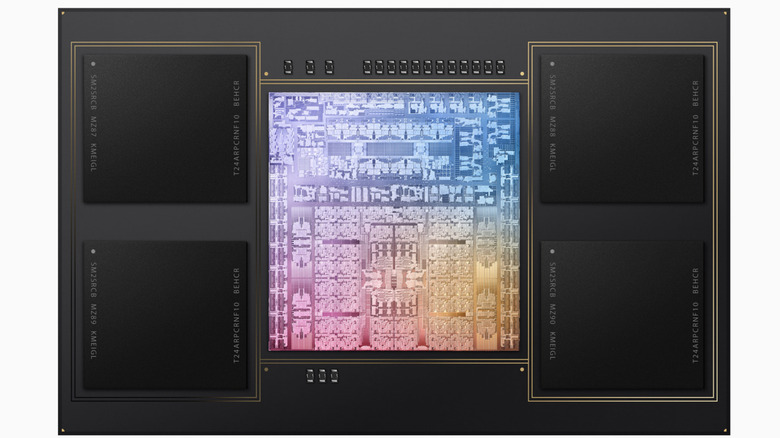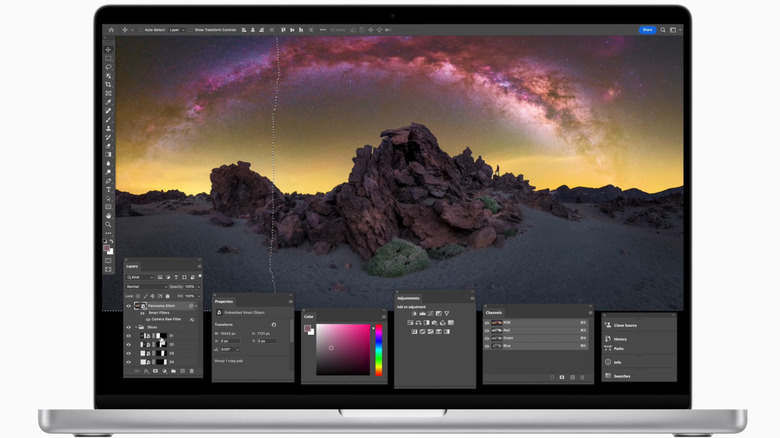Apple M3 Pro Vs. M3 Max: Which New Chip Is Best For Your Next Mac?
Apple has waded into a new era of processors with the M3 generation, leapfrogging industry peers like Intel and AMD. At its Scary Fast event, the company introduced a trio of new chips in the M3 series. While the vanilla M3 will power entry-point Macs, the M3 Pro and M3 Max are targeted at machines expected to perform more demanding tasks.
The M3 series comprises the first computing processors in the world based on the 3nm fabrication tech. In simple terms, that means higher performance output and a boost in energy efficiency. But this time around, the focus is not solely on the raw processing capabilities.
Apple says it has reimagined the graphics architecture on its new chips, and has also added niceties like hardware-accelerated ray-tracing and mesh shading into the mix. The M3 generation also adds support for Dynamic Caching for better memory resource allocation and a new media engine, as well.
Notably, Apple compared most of the M3 series performance gains with respect to the M1 generation, arguing that the folks on the M2 class Mac hardware apparently won't be needing an upgrade anytime soon. For folks eyeing new Mac hardware for pure firepower, the choice is between M3 Pro and M3 Max variants, both of which are explored below with key differences in tow.
The standout M3 upgrade
The M3 Pro and its Max version are said to ship with an next-gen GPU that is not only 65% faster than the M1 generation, but also nearly twice as power efficient. Thanks to the new Dynamic Caching tech linked to the graphics engine, Apple claims the M3 series processors offer tighter control over memory allocation.
The company says this tech pushes the GPU deeper into the workflow demands, thereby enhancing the performance of the task at hand. Intelligent resource allocation is tricky, and when the GPU doesn't deliver the kind of firepower it is capable of, users run into a performance bottleneck that worsens the experience at creative tasks as well as gaming.
Over the past few years, Apple has turned its attention towards gaming with initiatives like the Metal API and bringing console grade games to the iOS platform. This time around, Apple is making another major stride with the M3 series by adding support for hardware-accelerated ray-tracing. For the uninitiated, it's a system of graphics rendering that allows depicting more realistic shadows and accurate reflections in games.
It's quite resource-intensive to implement in the first place, while its software-driven counterpart delivers choppy results at best. With the arrival of hardware-accelerated ray-tracing on the M3 class processors, Apple is putting more power in the hands of developers to create more refined visual experiences in games without having to worry about the hardware limitations.
Processing boost all around
Apple has paid special attention to the graphics prowess of the M3 generation, but it hasn't ignored the CPU cores. Once again, we see a combination of performance and efficiency cores arranged in different clusters across the M3 Pro and M3 Max variants. The company says performance cores on the M3 generation are about 30 percent faster than those fitted on the M1 series processors.
In addition to the bump in the raw firepower for the prime cores that do the heavy lifting, the low-power efficiency cores have actually received the more meaningful attention. Compared to the M1 series, the M3 generation efficiency cores are 50% faster, and 30% beefier when pitted against the M2 tier.
Moving past the brute power figures, Apple notes that the cores deployed for the M3 class processors can offer the same level of multi-threaded performance as the M1 series while drawing half the power. When these cores are pushed to peak power input, their performance eclipses the M1 generation by a 35% margin.
The enhanced Neural Engine is said to speed up Machine Learning tasks with a 60% uptick, which provides a noticeable speed edge at AI-based tasks. Another crucial upgrade happens in the memory department, where Apple allows M3's powerful configurations to support up to 128GB unified memory. That's staggering for a laptop, even though it comes at a steep asking price.
Who should get the M3 Pro?
As expected, the biggest difference between the Pro and Max variants of the M3 series processors is the number of cores — both processing and graphics — at your disposal. Another crucial separation between the two tiers is the unified memory capacity. On the M3 Pro, you can go up to 36GB of RAM only, which is still on the upper end, as most comparable Windows laptops stick with a 32GB limit as the standard format. Putting the M2 Pro into perspective, that's not much of an upgrade, as that chip maxed out at 32GB of unified memory.
The top-tier M3 Pro configuration offers 12 CPU cores (six performance and six efficiency) and 18 GPU cores with a minimum 18GB of unified memory. Apple bundles this trim with a 96W charger. The lower-end version serves 11 CPU cores and 14 GPU cores, and comes with a 70W charger in the box. Another limitation with the M3 Pro trim is that it only supports up to two external monitors.
The M3 Pro-based MacBook Pro is a mighty laptop, and for folks engaged in demanding tasks such as video editing, graphics design, and AI-adjacent tasks like working with an ML model will find it to be a reliable workhorse. The M3 Pro lags behind the M3 Max in a few critical areas, but if you are using the former chips inside a laptop, the Pro configuration will offer a longer battery life, which is no small consideration.
Where the M3 Max would shine bright
Compared to the 37 billion transistors Apple offers with the M3 Pro, the Max variant lifts the performance bar enormously with 92 billion transistors. This one raises the number of processing cores to 14 on the entry-point configuration, while the number of GPU cores jumps to 30. If you pick up the top-end version, it offers 16 CPU cores and an impressive 40 GPU cores.
Now, those upgraded figures, especially in the graphics department, are going to dramatically speed things up. For example, compared to the M3 Pro, the M3 Max would be noticeably faster at editing tasks like high-resolution video exporting. Videos in 8K are still a niche, but if you're engaged in that kind of creative work, or just want a future-proof device, the M3 Max is where you should look.
The media engine on the M3 Max is also more powerful. So, let's say you are handling 8K footage, this particular chip would be the ideal option for dabbling in post-processing and color grading on such high-resolution content. Moreover, if your workflow requires a laptop with more than 36GB of unified memory, the only option you have is to pay for the M3 Max configuration.
As mentioned above, the M3 Max allows the flexibility of arming the MacBook Pro with up to 128GB of memory. Naturally, if you intend to run multiple demanding apps simultaneously — say, the likes of Maya or Lumion — that expanded memory would come in handy.
The AI and video game conundrum
We are living in the age of AI, and Apple itself makes a point to sell the AI-ready virtues of the M3 Max. The biggest change that the M3 Max would make in your workflow is that if you are dealing with AI-based work or pipelines that need crunching massive amounts of training data. Even Apple notes that the Max is ideal for users that seek to "develop transformer models with billions of parameters."
Now, that's more of a necessity than a perk. When it comes to AI development, names like Intel Xeon, AMD EPYC and Threadripper are commonplace. That's because they offer the necessary memory channel and the GPU flexibility needed for such tasks. With 16 cores, 40 GPU cores, and up to 128GB unified memory, the M3 Max is at the start line of "sufficiency" for power users. For scenarios like Deep Learning, a GPU is a must have since a discrete graphics engine parallelizes training tasks while a wider channel makes it easier to process large data sets.
Another reason that you would want to pick up the M3 Max solely for its graphics prowess is toward game development. In the past few years, Apple has broken new ground with work on the Metal infrastructure, but if you are creating game experiences that leverage hardware-accelerated ray-tracing and looking to create sophisticated 3D environments, the M3 Max should be the ideal pick.
